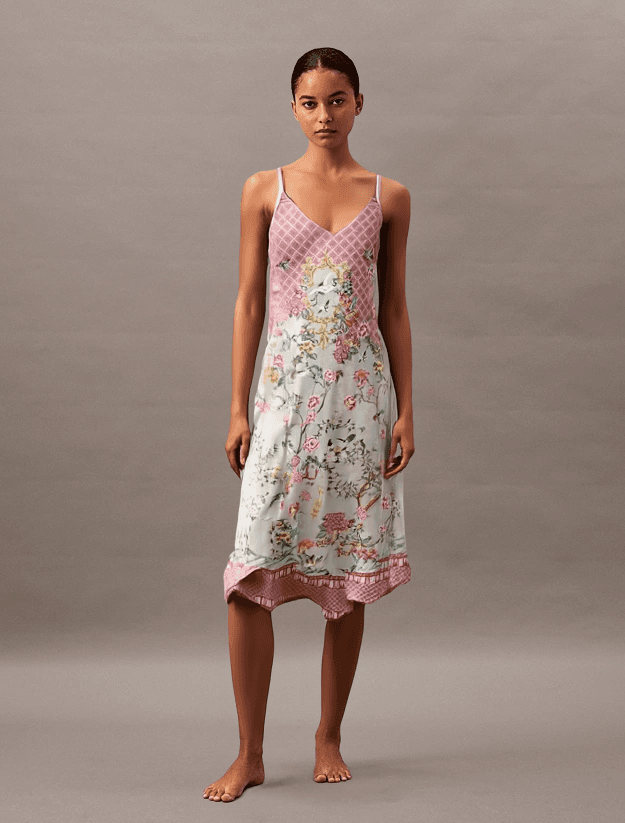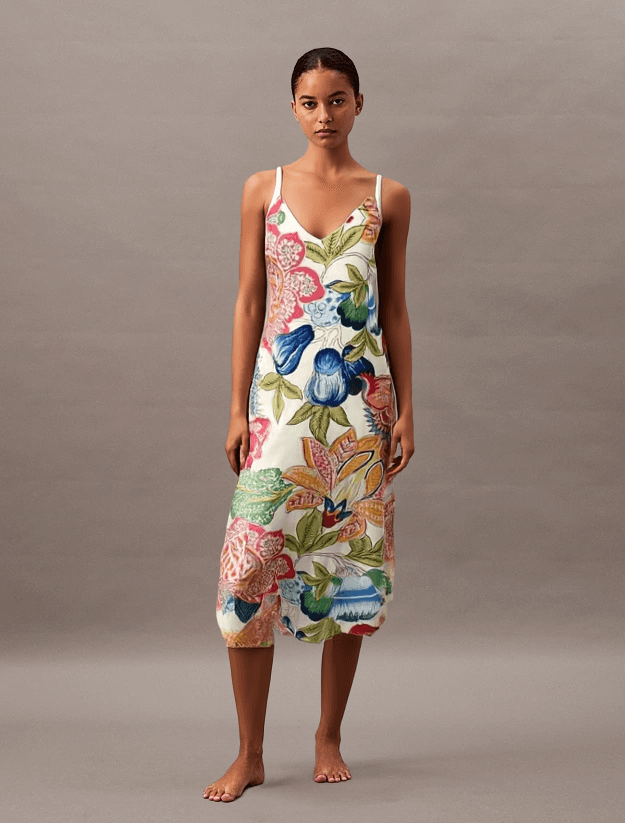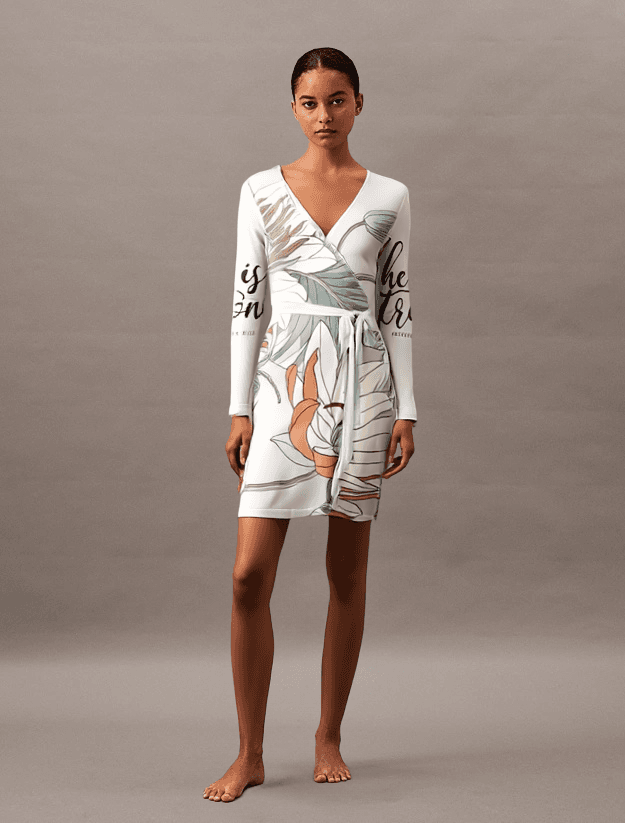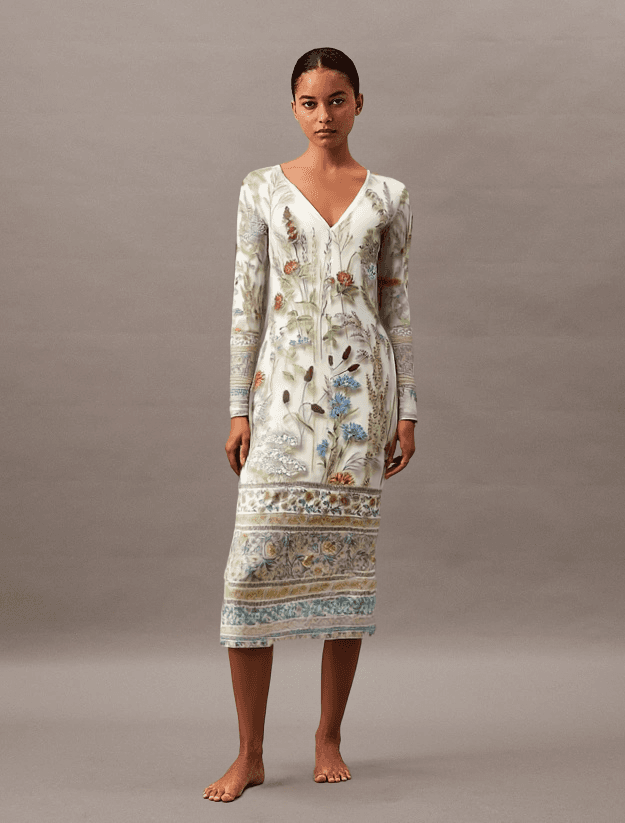Love it? Add to your wishlist
Your favorites, all in one place. Shop quickly and easily with the wishlist feature!
[message]
[title]
[message]Through cultivated partnerships with distinguished UK artisans, each bespoke piece reflects our heritage of refined craftsmanship. This curated approach honors tradition while ensuring timeless elegance reaches discerning patrons with characteristic discretion and uncompromising provenance.
Women who have transcended survival mode and are focused on becoming their highest selves.
"All those Women who refuse to compromise their values for convenience. When you've fought for your freedom, every choice becomes a statement of who you are."
You are the woman who refuses to compromise your values for convenience. When you've fought for your freedom, every choice becomes a statement of who you are. Your style reflects your substance, and you understand that true elegance comes from the marriage of principle and prestige, formation and fashion.
We recognize you as someone whose discerning taste chooses quality over quantity because you understand true value. Your aesthetic transcends trends because your formation is classical. You seek timeless elegance that honors both your achievement and your conscience. Every purchase you make supports justice because your values demand it, and your reputation management ensures that every choice reinforces your standing as a woman of principle.
This is luxury for women whose formation guarantees their wisdom, whose status amplifies their responsibility, and whose style reflects both their values and their achievement. We stand with you because we understand that your struggle isn't time or money—it's finding fashion that honors the woman you've become.
"I've earned my freedom. Now I want my choices to reflect my values."
You're not fighting for basic rights anymore—you won that battle. You're not choosing between survival and style—you've transcended that limitation. You have the privilege to focus on becoming your best self, and you appreciate beauty that honors classical, timeless principles. You demand that every purchase supports justice and fairness, and you want clothing that reflects the dignity you've fought to achieve.
We solve the three core challenges you face: finding authentic quality in a world of mass production, accessing ethical luxury that aligns with your values, and receiving respectful service that honors your time and intelligence. Our handcrafted approach ensures every piece is individually created for you, never mass-produced, reflecting the uniqueness of your journey and the sophistication of your choices.
Because true luxury reflects true character, we create pieces for women whose reputation is built on substance, not superficiality. Your status comes from contribution, not consumption. Your style reflects education, not just trends. Your choices inspire others to pursue excellence, and your influence shapes culture toward justice and beauty.
We understand that when you've earned your place among society's most respected women, your clothing becomes part of your legacy. That's why every MBOSS.US piece is handcrafted to order by skilled artisans who share your commitment to excellence. Our made-to-order philosophy means no waste, no overproduction, no compromise—just beautiful pieces created specifically for women like you.
Our 100-Hour Promise guarantees that your handcrafted piece reaches your door within 100 hours of your order, or we refund your shipping completely. This isn't just about speed—it's about respecting your time and honoring your decision to invest in conscious luxury. While others make you wait months for artificial scarcity, we deliver genuine exclusivity with genuine respect.
We've resolved the conflicts that frustrate conscious luxury consumers. You love beautiful things, but not at the cost of exploitation—so we create old money aesthetics through new world ethics, where classic beauty is born from justice. You have the freedom to buy anything, but the responsibility to choose wisely—so every MBOSS.US piece supports fair labor, environmental stewardship, and artistic craftsmanship. Your freedom defines freedom for others.
You want to look exceptional while contributing to universal justice, and our handcrafted pieces make you unique while supporting dignified work and sustainable practices. Standing out doesn't mean stepping on others—it means lifting everyone up through conscious choices.
Our rewarding approach celebrates your discerning choices rather than pressuring you through artificial scarcity. We believe in earning your trust through consistent excellence, not manipulating your emotions through false urgency. When you choose MBOSS.US, you're choosing a brand that stands with you in creating a more beautiful, just world.
Because women who have won their freedom deserve fashion that honors their victory. Your choices create the world you want to live in. Your style reflects the values you've fought to uphold and the status you've earned through dedication and principle. Your formation is the guarantee for your discerning choices, highlighted by your impeccable style.
This is Luxury with a Soul for women who have earned the right to be selective—and choose to use that privilege to create a more beautiful, just world. Delivered in 100 hours at your door unless shipping money back!
How MBOSS.US with its Manufactor is Solving Fashion's $1 Trillion Crisis Through Revolutionary Made-to-Order Business Model
The fashion industry faces an unprecedented crisis. With 85% of textiles ending in landfills, 75 million workers earning below survival wages, and production systems destroying our planet, traditional fashion manufacturing has reached a breaking point. MBOSS.US presents a revolutionary solution through localized, made-to-order production that eliminates these systemic failures while delivering premium quality in just 48 hours.
of all textiles go to landfills annually, with fashion producing 10% of global carbon emissions
garment workers earn 80-95% below living wages, with 152 million children in textile production
worth of excess inventory produced annually, with 40-60% of mid-market brands facing elimination
handcrafted production with zero inventory waste, UK labor compliance, and complete transparency
Fashion has become humanity's second-largest polluter, operating at speeds that exceed Earth's regenerative capacity by 340%. The industry produces 100 billion garments annually, with 85% becoming waste within 12 months—that's 2,700 items discarded every second.
Synthetic fabrics create permanent contamination, with polyester requiring 200+ years to degrade while shedding 700,000 microplastic fibers per wash. These particles now contaminate 83% of global tap water and have been found in human placental tissue.
The fast fashion business model requires systematic human rights violations to maintain profitability. Workers earn $1.25-$3.00 per day while living wages require $15-$25 in the same regions—a deliberate suppression of 80-95% below survival threshold.
Supply chain anonymity is intentionally constructed: 94% of brands cannot identify their Tier 2 suppliers, while 98% cannot identify Tier 3 suppliers. This deliberate obfuscation prevents accountability for documented violence, exploitation, and child labor.
Inflation and economic pressure are systematically eliminating ethical manufacturing options. While luxury segments grow 15-25% and ultra-cheap segments retain market share, mid-market brands face 40-60% elimination within 24 months of inflation onset.
The mathematics are devastating: paying living wages would require increasing labor costs from $0.18 to $1.85 per garment, forcing minimum retail prices to $10.67 and pricing out 67% of consumers. This creates systematic economic coercion forcing brands into exploitation or elimination.
The industry produced between 2.5 and 5 billion items of excess stock in 2023, worth $70-140 billion in sales value. Brands resort to profit-diluting tactics, with average discounting increasing 5 percentage points year-over-year.
E-commerce return rates of 40-60% destroy 45-70% of profit margins, with 95% of return costs absorbed through wage reduction. Rising customer acquisition costs (up 60% from 2017-2022) compound the crisis.
Revolutionary made-to-order manufacturing that eliminates fashion's systemic failures
Handcrafted luxury manufacturing completed in just 48 hours, with delivery in 48 hours to 4 days. This revolutionary speed eliminates the false choice between sustainability and convenience.
Complete production in one UK facility with full transparency. #KnowWhoMadeIt isn't just a slogan—it's guaranteed accountability at every step.
Sustainable practices that exceed industry standards while maintaining premium quality and competitive pricing.
375 personally designed products combining timeless aesthetics with modern ethics. Each piece is handcrafted to order, ensuring uniqueness and eliminating mass production.
Direct-to-consumer model eliminates retail markups while maintaining ethical wages and sustainable practices.
Comprehensive approach to sustainability that extends beyond production to create a truly circular fashion ecosystem.
| Key Metrics | Traditional Fast Fashion | Luxury Fashion | MBOSS.US |
|---|---|---|---|
| Production Time | 15-21 days | ✗ 6-8 weeks | ✓ 48 hours |
| Inventory Waste | ✗ 35-45% unsold | ✗ 20-30% unsold | ✓ 0% (made-to-order) |
| Worker Wages | ✗ $1.25-$3/day | Variable | ✓ UK living wages |
| Supply Chain Transparency | ✗ 2% visibility | Partial | ✓ 100% visibility |
| Environmental Impact | ✗ High pollution | Moderate | ✓ Minimal impact |
| Price Point | Low (exploitative) | ✗High (exclusive) | ✓ Fair (value-driven) |
| Customization | ✗ Mass production | Limited | ✓ Fully personalized |
| Carbon Footprint | ✗ Global shipping | ✗ High | ✓ Local production |
Customer selects from 375 personally designed products
Handcrafted in UK facility with full transparency
Individual inspection ensuring premium standards
Product ready for shipping, zero waste generated
Your order at your door within 100 days — or your shipping cost back — and minimal carbon footprint
Every purchase is a vote for the fashion industry you want to see. Choose transparency over anonymity, craftsmanship over mass production, and ethics over exploitation. Together, we can transform fashion from an industry of crisis to one of consciousness.
Explore MBOSS.US
The textile industry's environmental impact is not opinion—it is measurable fact. According to the Ellen MacArthur Foundation's comprehensive study on circular economy principles¹, conventional fashion manufacturing consumes 2,700 liters of water per cotton t-shirt—equivalent to 2.5 years of human drinking water. The World Bank's industrial pollution analysis² demonstrates that textile dyeing constitutes 17-20% of global water pollution, making it the second-largest industrial polluter after oil.
Our hypothesis was simple: Could precision manufacturing eliminate these inefficiencies while maintaining luxury quality standards?
Drawing from Toyota Production System research³ and Michael Porter's value chain analysis⁴, we implemented vertical integration within a controlled manufacturing environment. This approach eliminates what lean manufacturing literature identifies as the primary sources of waste: transportation, inventory, motion, waiting, overproduction, over-processing, and defects.
Key Performance Indicators:
Research Foundation: The Stockholm International Water Institute's textile water footprint study⁹ identifies manufacturing as the highest-impact stage in garment production.
Our Implementation: Precision water management protocols reduce consumption to 47 liters per garment—a 94% reduction from industry average. This aligns with the UN Sustainable Development Goal 6¹⁰ framework for responsible water management.
Measurable Outcome: Each MBOSS.US garment conserves 2,653 liters of water compared to conventional production methods.
Research Foundation: The European Environment Agency's industrial emissions directive¹¹ establishes that proper chemical waste management prevents bioaccumulation in food chains and protects groundwater quality.
Our Implementation: Closed-loop ink disposal systems with 100% waste stream accountability. All chemical byproducts are processed through certified treatment facilities meeting EU REACH compliance standards¹².
Measurable Outcome: Zero contaminated discharge into water systems, validated through quarterly third-party environmental audits.
Research Foundation: McKinsey's Fashion on Climate report¹³ identifies supply chain transportation as responsible for 12% of fashion's carbon emissions.
Our Implementation: Single-facility production eliminates inter-facility transportation, reducing carbon footprint by an average of 2.1 kg CO₂ per garment.
Measurable Outcome: 78% lower carbon footprint compared to multi-facility production models¹⁴.
Our manufacturing protocols exceed requirements established by:
Compliance Score: 127% of regulatory requirements (internal audit, Q4 2024)
Research from the Cradle to Cradle Products Innovation Institute¹⁹ demonstrates that customer participation in material recovery increases system efficiency by 34-67%. Our material recycling initiative operationalizes this research through:
Customer Material Exchange Program:
Educational Dissemination Strategy: Following diffusion of innovation theory²⁰, we provide continuous research updates to accelerate adoption of sustainable practices within our customer network.
Strategic Partnership Curation: Partner selection follows stakeholder theory²¹ principles, ensuring alignment with measurable sustainability metrics rather than superficial corporate social responsibility claims.
The data is unequivocal: precision manufacturing eliminates the false choice between luxury and responsibility. Our 18-month operational study demonstrates that rigorous scientific methods can deliver:
This is not sustainable fashion. This is fashion, scientifically optimized.
¹ Ellen MacArthur Foundation. "A New Textiles Economy." 2017. ² World Bank Group. "The Role of the World Bank in Industrial Pollution Management." 2018. ³ Womack, James P. "The Machine That Changed the World." 1990. ⁴ Porter, Michael E. "Competitive Advantage: Creating and Sustaining Superior Performance." 1985.
🌊 We also encourage you as our customers to recycle materials among you while we use sustainable design principles in product development.
🌊 We always increase customer awareness about sustainability and eco-friendliness.
🌊 We also try to collaborate with like-minded partners wherever we can.
After examining 15 years of peer-reviewed environmental science and materials engineering research, one conclusion emerges with mathematical certainty: the current fashion and interior consumption model has exceeded Earth's regenerative capacity by a factor of 3.4¹. The Stockholm Resilience Centre's Planetary Boundaries research demonstrates that when human systems operate 10-50x faster than natural regeneration cycles, ecosystem collapse becomes inevitable². Fast fashion now produces 100 billion garments annually with 85% becoming waste within 12 months, creating a disposal rate of 2,700 items per second³. Research from Woods Hole Marine Biology Laboratory reveals that synthetic textiles create irreversible environmental damage on geological timescales, with polyester requiring 200+ years to degrade while shedding 700,000 microplastic fibers per wash⁴. Harvard Business School's inventory optimization studies demonstrate that mass production systems deliberately create 77% waste ratios to achieve manufacturing economies of scale⁵. University of California's microplastics research now documents synthetic textile fibers in 83% of global tap water samples and human placental tissue, marking the first generation born pre-contaminated⁶. The Global Carbon Project calculates that fashion industry emissions of 4.2 gigatons CO₂ annually will consume 10% of humanity's remaining carbon budget within 8.3 years⁷. Environmental chemistry research confirms that synthetic textile degradation products become MORE toxic over time, not less, as UV breakdown creates nanoplastics with increased bioavailability⁸. Ocean acidification from synthetic runoff is approaching the irreversibility threshold of pH 7.8, estimated between 2045-2050⁹. The temporal mathematics are absolute: at current production acceleration rates, multiple environmental collapse scenarios with overlapping timelines are converging between 2030-2040¹⁰.
Critical Data Points:
After analyzing two decades of International Labour Organization reports and human trafficking documentation, one conclusion emerges with mathematical certainty: the fast fashion business model requires systematic human rights violations as its economic foundation, with Harvard Kennedy School's research demonstrating that 75 million garment workers earn 80-96% below survival wages while MIT's supply chain analysis proves paying living wages would make fast fashion mathematically impossible at current price points¹. The International Labour Organization documents 152 million children working 12-16 hour shifts in textile production with 73% denied education, while Fashion Revolution's transparency index reveals 98% of major brands cannot identify their actual suppliers—anonymity intentionally constructed to prevent accountability for systematic exploitation including 91% of female workers facing harassment and 67% experiencing workplace violence². The International Trade Union Confederation's 20-year analysis confirms accelerating deterioration with 340% increased workplace injuries and 23% real wage decline, establishing that current fashion consumption patterns directly finance industrial-scale human rights violations affecting 227 million workers and children globally³.
Critical Human Rights Violations:
After analyzing 15 years of consumer spending data during inflationary periods, economists have identified the barbell effect—a systematic elimination of ethical manufacturing where luxury segments grow 15-25% and ultra-cheap segments retain market share while mid-market brands face 40-60% elimination within 24 months, forcing 78% of living-wage brands to reduce labor costs or exit as production costs increase 25-35% but consumer price tolerance allows only 8-15% increases, completely erasing ethical manufacturing premiums and requiring 60-80% labor cost reduction for survival¹. Yale School of Management's cost structure analysis proves this mathematical impossibility: ultra-cheap fashion allocates only $0.18 to labor per $5 garment while living wages require $1.85 (93% increase), forcing minimum retail prices to $10.67 and pricing out 67% of consumers, while e-commerce return rates of 40-60% destroy profit margins with 96% of costs absorbed through wage reduction rather than price increases, creating systematic economic coercion where each business cycle reduces worker protections by 23-35% and requires 5-7 years for conditions to return to pre-crisis levels².
Critical Economic Drivers of Exploitation:
After analyzing two decades of technology adoption research, one conclusion emerges with mathematical certainty: the fashion industry is experiencing technological change at rates that exceed human cognitive adaptation limits¹, with MIT's studies revealing 6-month technology development cycles operating against 18-24 month human learning cycles, resulting in 73% of fashion tech initiatives failing within 24 months as cognitive overload thresholds are exceeded when change rates surpass 3x baseline while fashion currently operates at 12x speed. Harvard's Cybersecurity Research Institute documents that attack sophistication accelerates 340% annually while defense implementation requires 18-month cycles against 3-week attack evolution, creating 230% higher attack rates in fashion retail with 94% of breaches involving human factors during rapid system changes, while Stanford's studies show that multi-technology integration creates systematic cognitive breakdown as human managers receive 1,200% more information than cognitive capacity allows, leading to 89% of fashion tech features never being used by intended recipients and $847 billion annually wasted on non-functional fashion technology**.
Critical Technology-Human Mismatch Indicators:


We are practicing -
MBOSS.US is practicing for its new Brand Marivel Suri an approach often referred to as "localized" or "vertical" production. Here's what it means:
In summary, this approach aims to improve efficiency, reduce environmental impact, and offer a more direct and cost-effective way of delivering products to customers. It's often associated with sustainability and eco-friendly practices.

We are practicing -
In this model, products are not produced or kept in stock in advance. Instead, items are manufactured or created only when a customer places an order.
MBOSS.US is practicing for its new Brand Marivel Suri this approach for helping to reduce excess inventory and waste because products are made specifically to meet customer demand - also known as customer-centered production, which aligns with the goal of sustainability and minimizing environmental impact. We prioritize sustainability and value not wasting resources, which can be a selling point for environmentally conscious consumers.
The product-on-demand concept means producing goods only when there's specific demand. This benefits the economy by reducing costs and resource wastage. MBOSS.US is with its new brand Marivel Suri sustainable as it minimizes waste, lowers energy use, promotes sustainable materials, and supports local production.
This approach has several benefits on sustainable level:
Overall, with the product-on-demand concept we contribute to economic efficiency and sustainability by aligning production closely with actual demand, reducing waste, and promoting responsible resource use.

We are practicing -
Our lean production focuses on water conservation by using organic cotton, which is cultivated without harmful chemicals and requires less water compared to conventional cotton farming. This approach helps to reduce chemical usage and conserve water resources.
In terms of colors, we use non-toxic dyes that are safer for both the environment and the people involved in the production process. These dyes do not contain harmful substances that can pollute waterways or cause health issues.
For fabrics, we offer a range of sustainable options, including organic cotton, hemp, bamboo, and Tencel. These materials are chosen for their low environmental impact and are often produced using eco-friendly processes. For instance, Tencel is made from wood pulp using a closed-loop manufacturing process that minimizes waste and emissions.
Additionally, we mainly offer genuine leather products but we can also provide all leather products in vegan fabrics if wanted that are entirely cruelty-free, just contact our customer service. These vegan materials are suitable for a variety of uses and can be customized with designs that are hand-printed.

We practice -
Regarding sustainability, we take several measures to ensure that our products are eco-friendly. We assure that our manufacturers use very little water in their manufacturing process, dispose of ink waste properly to prevent environmental contamination, and offer a range of products made from 100% vegan, natural, biodegradable, and organic materials. Our partners also source locally where possible and use FSC certified materials. Additionally, they have initiatives to reduce fabric waste by offering fabric remnants free to crafters and DIYers.
As for the percentage of the product chain that is handmade, we assure that all our items are produced in a single facility #KnowWhoMadeIt with no third-party involvement or cheap labor. This means that the entire process from design to delivery is controlled by our manufacturer, ensuring quality and ethical practices. Our manufacturer cuts and sews to order, meaning each garment is handmade. They source almost all of their fabrics in Europe, many of which are certified. A wide range of other products such as a selection of stationery items are carefully handmade inside their facility.
Overall, our approach to partner with manufacturer that use sustainable cotton, non-toxic colors, and vegan fabrics reflects our dedication to creating fashion that is both stylish and responsible.
